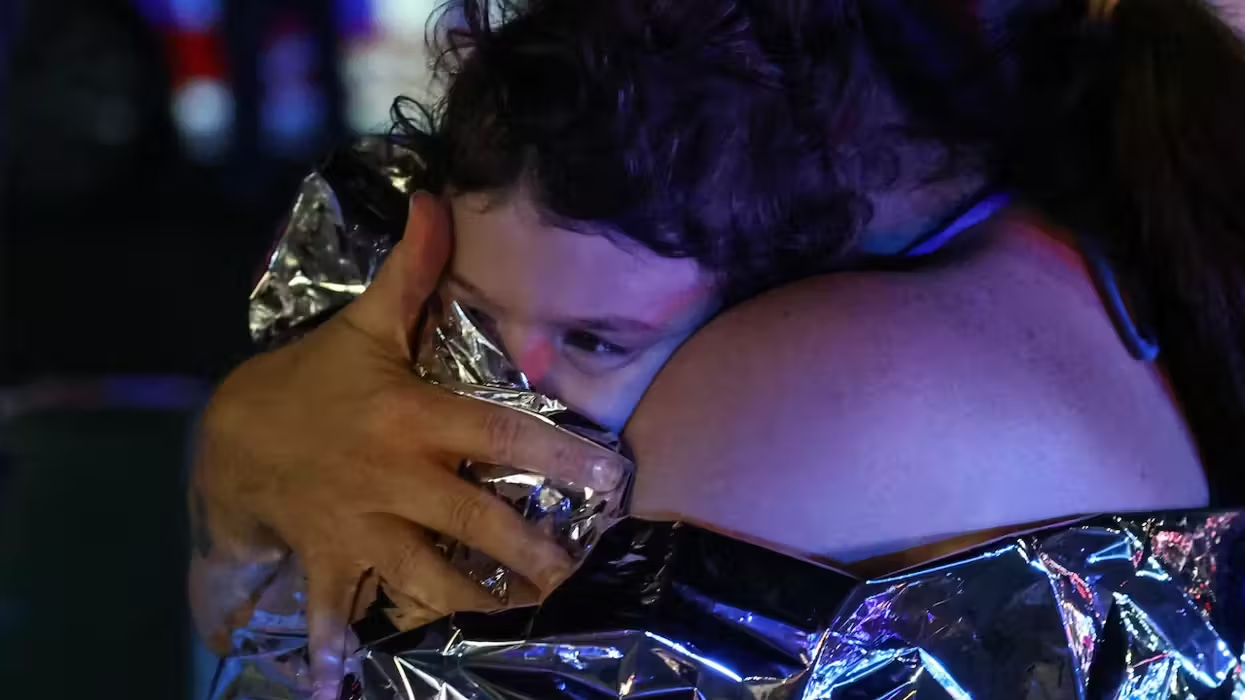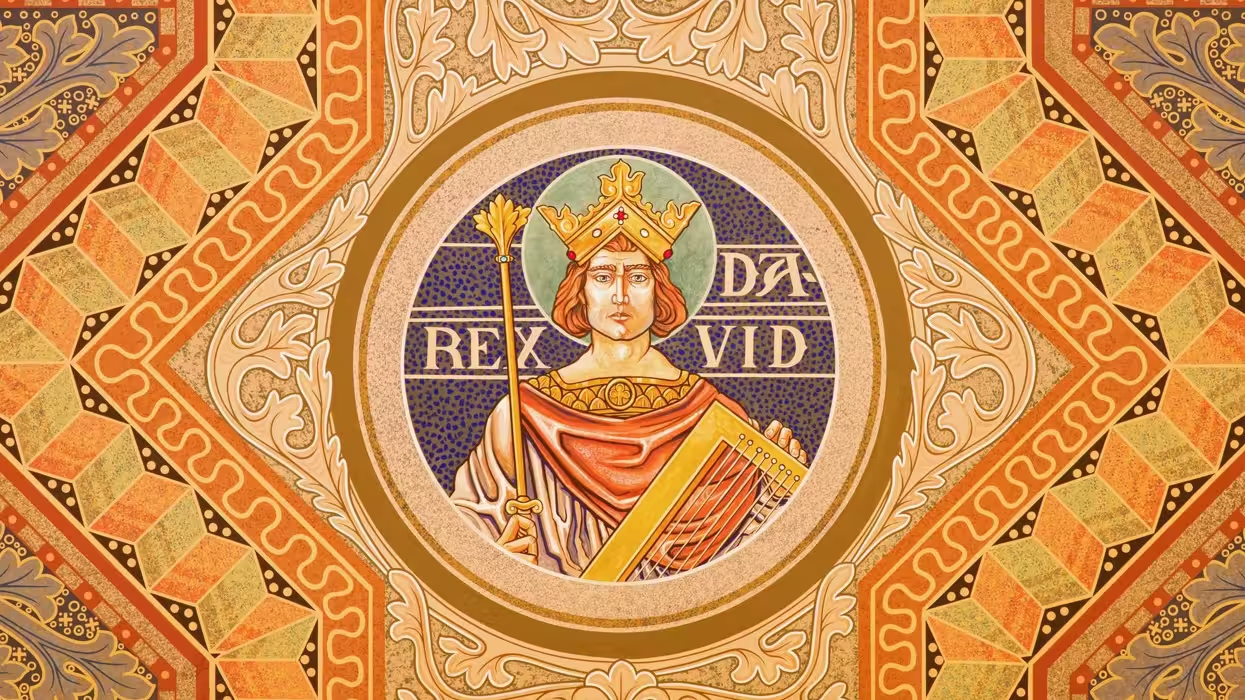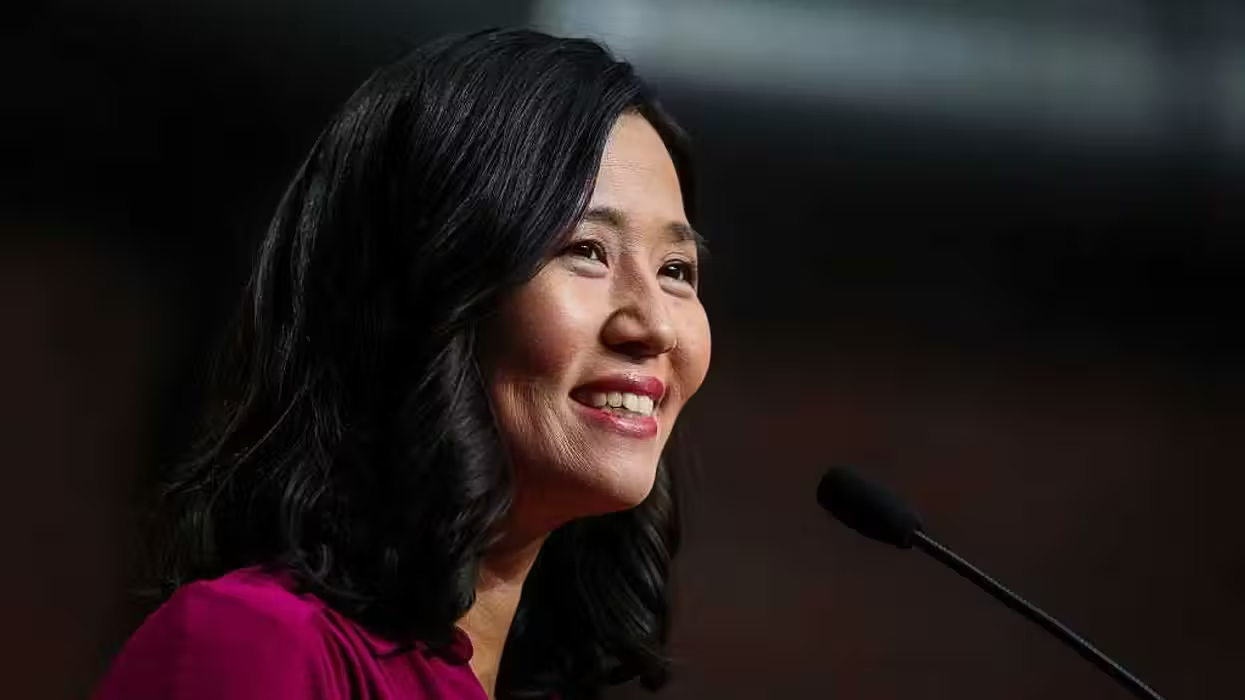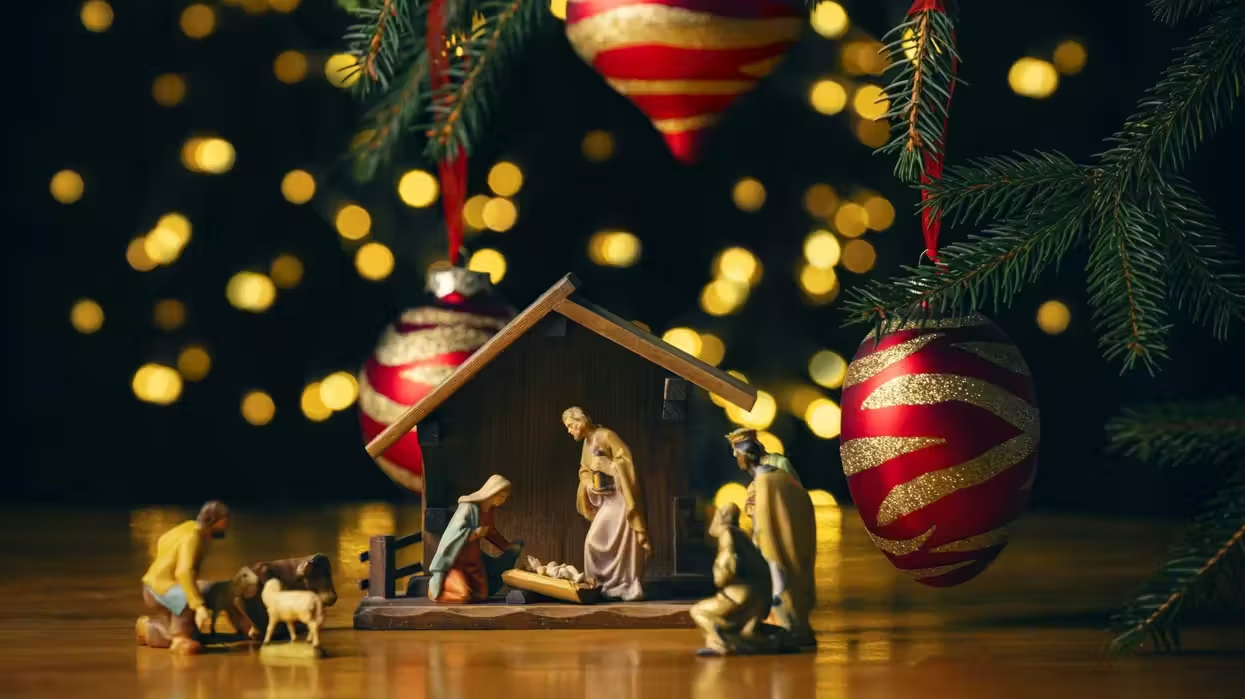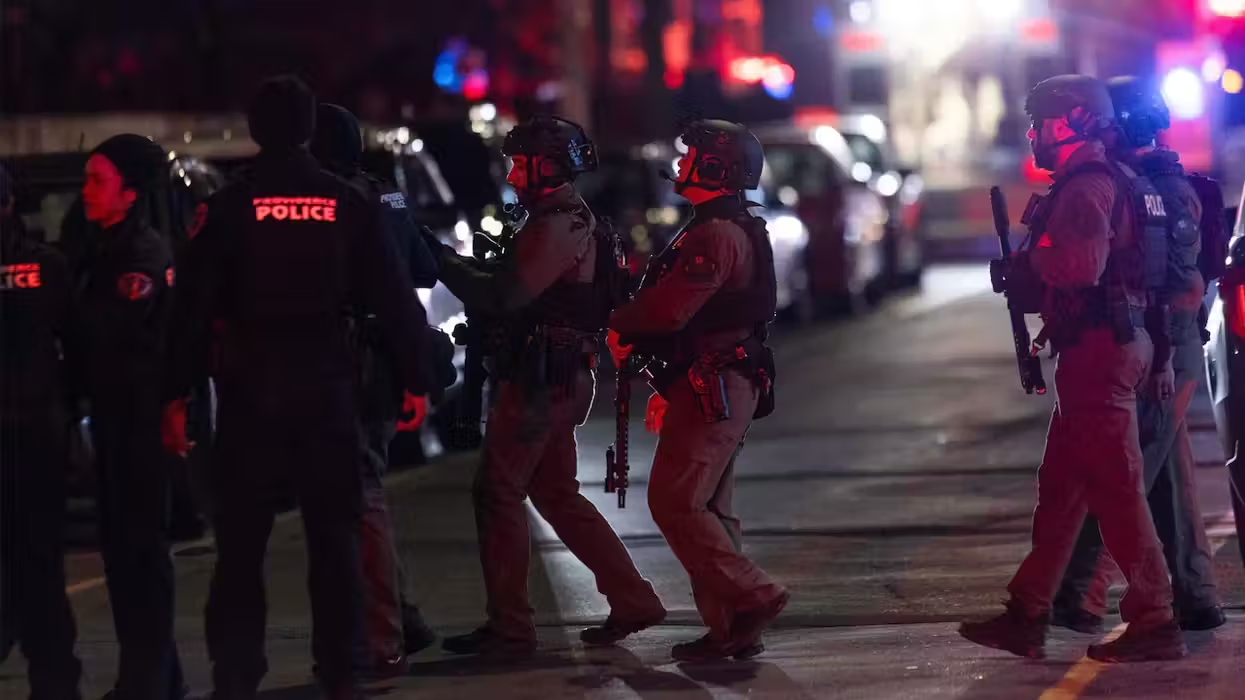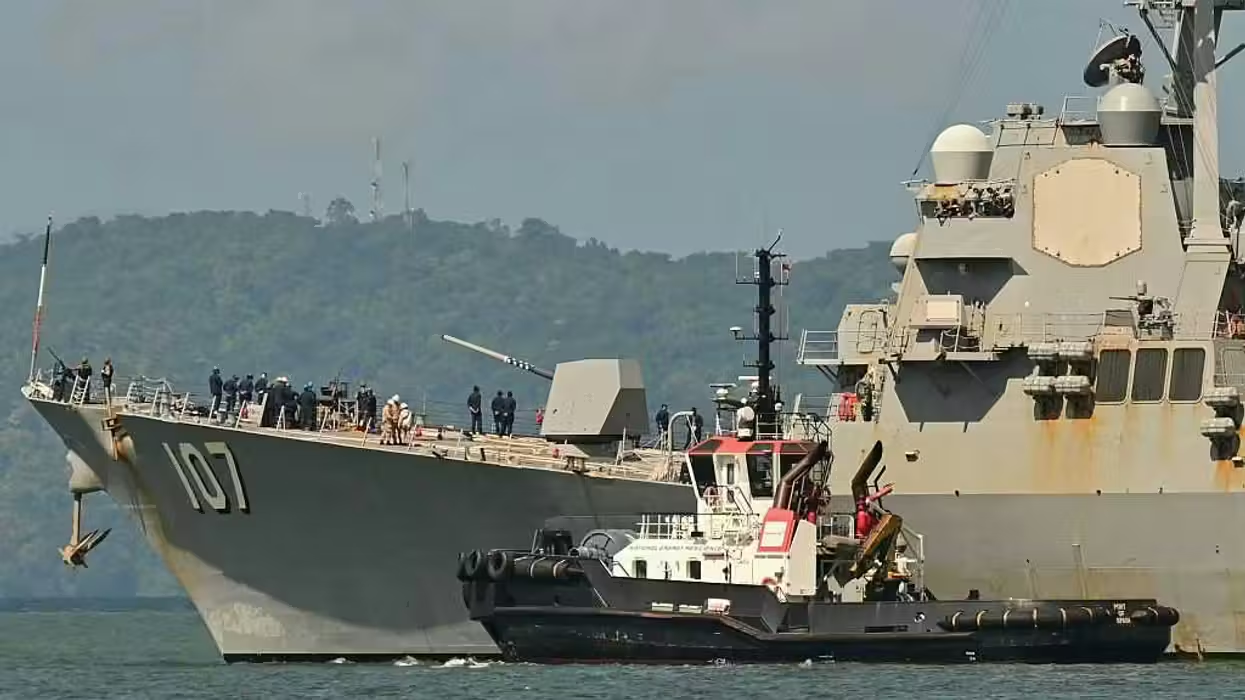VATICAN CITY (TheBlaze/AP) -- The Catholic Church awoke Friday with no leader following Benedict XVI's resignation, in which he pledged obedience to his successor and described himself as "simply a pilgrim" starting the final journey of his life.
Now begins a period known as the "sede vacante" or "vacant see" -- the transition between the end of one papacy and the start of another.
During these few days -- no more than 20 -- a few key players take charge running the Holy See, guiding the College of Cardinals in their deliberations and organizing the conclave to elect Benedict's successor.
 In this photo provided Friday, March 1, 2013, then Pope Benedict XVI is saluted by Cardinal Angelo Sodano, left, as leaves the Vatican to board helicopter where he will depart to the pontiff's summer residence of Castel Gandolfo, Thursday, Feb. 28, 2013. Benedict XVI left the Catholic Church in unprecedented limbo Thursday as he became the first pope in 600 years to resign, capping a tearful day of farewells that included an extraordinary pledge of obedience to his successor. Credit: AP
In this photo provided Friday, March 1, 2013, then Pope Benedict XVI is saluted by Cardinal Angelo Sodano, left, as leaves the Vatican to board helicopter where he will depart to the pontiff's summer residence of Castel Gandolfo, Thursday, Feb. 28, 2013. Benedict XVI left the Catholic Church in unprecedented limbo Thursday as he became the first pope in 600 years to resign, capping a tearful day of farewells that included an extraordinary pledge of obedience to his successor. Credit: AP
With the 8 p.m. Thursday end of Benedict's papacy, every department head in the Vatican lost his job -- except for those whose offices are crucial for the smooth running of the transition period. Cardinals on Monday begin meetings to set the conclave date and discuss problems facing the church.
Here are the top figures who will run the church in the coming days:
CAMERLENGO: Cardinal Tarcisio Bertone. The camerlengo, or chamberlain, takes over the day-to-day running the Holy See as soon as the papacy ends. He places the seal on the pope's study and bedroom and takes possession of the Apostolic Palace, "safeguarding and administering the goods and temporal rights of the Holy See" until a new pope is elected. On Thursday night, Bertone sealed the apartment, which will not be reopened until a new pope is elected. Benedict in 2007 gave the camerlengo job to Bertone, 78, a natural choice given Bertone is currently the Vatican No. 2 as secretary of state and runs the Vatican bureaucracy anyway. A priest of the Salesian order, Bertone was trained as a canon lawyer and taught in various Roman universities for several years before coming to work for the former Cardinal Joseph Ratzinger at the Vatican's doctrine office in 1995. As secretary of state, Bertone has had Benedict's unwavering trust, but his legacy has been mixed. He had no diplomatic training coming into the Holy See's most important diplomatic and administrative post, and critics blame the gaffes of Benedict's papacy and current state of the Vatican's dysfunction on Bertone's managerial shortcomings. The 2012 leaks of papal documents appeared aimed at undermining his authority further, by exposing power struggles and turf battles that festered under his watch. In his last speech as pope, however, Benedict singled out Bertone for thanks.
---
DEAN OF THE COLLEGE OF CARDINALS: Cardinal Angelo Sodano. The dean is the senior member of the College of Cardinals, the so-called "princes" of the church whose main task is to elect a pope. In one of his first official acts as dean, Sodano on Friday officially summons cardinals to Rome to participate in the conclave, a formality given that most are already here. The dean oversees the pre-conclave meetings of the College and also has duties inside the conclave itself, including asking the newly elected pontiff if he accepts the job. But Sodano is 85 and cannot vote, so some of those duties shift to the sub-dean. Burly and sociable, the Italian Sodano was Pope John Paul II's longtime secretary of state. As dean he spoke on behalf of all the cardinals in giving a final farewell to Benedict on Thursday, thanking him for his "selfless service." Sodano and Benedict were known to have clashed when Benedict was Cardinal Joseph Ratzinger, particularly over the scandal-plagued Legion of Christ religious order. Sodano was a chief backer and protector of the Legion's late founder, the Rev. Marcial Maciel, even though the Vatican had known for years of solid allegations that he was sexually molesting his seminarians. Within Benedict's first year in office, Maciel was sentenced by the Vatican to a lifetime of penance and prayers for his crimes. That same year Benedict named his trusted Bertone to replace the retiring Sodano as secretary of state.
 Pope Benedict XVI waves at the faithful as he leaves Saint Lawrence in Piscibus church after celebrating a mass at the International Youth Centre in Rome March 9, 2008. Celebrating the Angelus Sunday prayer later from his balcony overlooking St Peter's Square, the pontiff called on Israelis and Palestinians to negotiate for peace, condemning a surge of violence in the region as part of a 'spiral of destruction'. Credit: AFP/Getty Images
Pope Benedict XVI waves at the faithful as he leaves Saint Lawrence in Piscibus church after celebrating a mass at the International Youth Centre in Rome March 9, 2008. Celebrating the Angelus Sunday prayer later from his balcony overlooking St Peter's Square, the pontiff called on Israelis and Palestinians to negotiate for peace, condemning a surge of violence in the region as part of a 'spiral of destruction'. Credit: AFP/Getty Images
---
MASTER OF LITURGICAL CEREMONIES: Monsignor Guido Marini. The master of liturgical ceremonies runs the religious side of the conclave and the installation Mass for the new pope, all of them carefully choreographed rites and rituals. He is by the side of the dean when the newly elected pope is asked if he accepts the election. And as the main witness and notary, he draws up the formal document certifying that the new pope's name and that he has accepted the job. Benedict appointed Marini to the job in 2007, replacing Monsignor Piero Marini who for two decades was Pope John Paul II's right-hand man for all things liturgical. The shift was intentional. Under Guido Marini, papal Masses became far more reverent, with more Latin, Gregorian chant and the heavy silk-brocaded vestments of the pre-Vatican II church. In changes introduced just before he resigned, Benedict made clear he wanted this more traditional vision of his papacy carried forward for the installation of a new pope. He called for the rites of installation to be separate from the liturgy itself and for cardinals to make a public pledge of obedience to the new pope during the Mass. Previously, their pledge of obedience was done in private in the Sistine Chapel immediately after the election. In keeping with Benedict's classical musical tastes, the new rites also allow for more flexibility in musical choices rather than the modern selections previously in favor. The aim, Marini recently told the Vatican newspaper L'Osservatore Romano, was to make "the most of the rich musical repertoire of church history."
---
PROTO-DEACON: Cardinal Jean-Louis Tauran. The proto-deacon's main task is to announce to the world that a pope has been elected: "Habemus Papam!" ("We have a pope!") he shouts from the loggia overlooking St. Peter's Square after the white smoke has snaked up from the Sistine Chapel chimney. He then introduces the new pope - in Latin - along with the name he has chosen. The French-born Tauran is a veteran Vatican diplomat who served in the Dominican Republic and Lebanon. He currently heads the Vatican's office for interreligious dialogue - in other words the Vatican's primary point man for Catholic-Muslim relations. Benedict appointed him proto-deacon in 2011.
--
More Stories From Billy Hallowell:

 In this photo provided Friday, March 1, 2013, then Pope Benedict XVI is saluted by Cardinal Angelo Sodano, left, as leaves the Vatican to board helicopter where he will depart to the pontiff's summer residence of Castel Gandolfo, Thursday, Feb. 28, 2013. Benedict XVI left the Catholic Church in unprecedented limbo Thursday as he became the first pope in 600 years to resign, capping a tearful day of farewells that included an extraordinary pledge of obedience to his successor.
In this photo provided Friday, March 1, 2013, then Pope Benedict XVI is saluted by Cardinal Angelo Sodano, left, as leaves the Vatican to board helicopter where he will depart to the pontiff's summer residence of Castel Gandolfo, Thursday, Feb. 28, 2013. Benedict XVI left the Catholic Church in unprecedented limbo Thursday as he became the first pope in 600 years to resign, capping a tearful day of farewells that included an extraordinary pledge of obedience to his successor. 
